Keep yourself physically active
We all know the old adage, ‘move it or lose it.’ This rings true regarding much of the human body, not least our knees. The best way to avoid pain and stiffness in the knees (and other joints, for that matter) is to keep them in motion. In other words, make a point of taking regular exercise.
Perform exercises that work the legs
If you’re worried about the knees hurting, it’s obviously very tempting to stay off your feet and avoid any movements that put your legs under strain. This is a mistake. If you want healthy, supple, pain-free knees, you need to work out those legs. That means squats and lunges – which can be performed using your bodyweight alone – and deadlifts if you’re okay with weights.
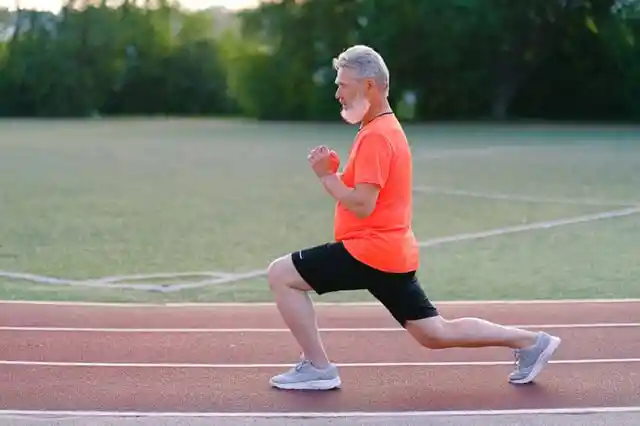

Avoid high impact exercises that strain the joints
While you definitely shouldn’t be skipping leg day, you don’t want to overwork that lower body either. Many modern cardio workouts emphasize high-impact moves involving a lot of jumping, and while these can be great for getting your heart rate up, they can also be extremely hard on the knees. It’s best to avoid such exercises, as they may do more harm than good.


Try to maintain a healthy bodyweight
Forget all that nonsense about six-packs and beach bodies. Watching your weight for aesthetic reasons is hardly essential, but it is still worth keeping an eye on for the sake of your health. More bodyweight means more for you to carry around at all times, which in turn means more strain on those knees if you’re not careful.
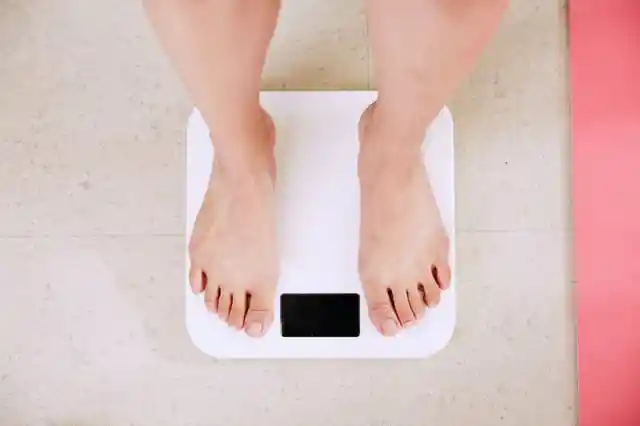

Eat more fruits and vegetables
We know, everyone’s been telling us forever we need more fruit and vegetables, but there’s a reason: they really are good for you, and your knees. A largely plant-based diet including grains and pulses can reduce inflammation, a root cause of joint pain. Meat, eggs and dairy, meanwhile, can increase inflammation. We’re not saying you should go vegan, but we’re not saying you shouldn’t either.


Don’t ignore injuries
Most of us are guilty of ignoring little aches, pains and minor injuries, not wanting to make a fuss and telling yourself it’ll get better on its own. The older we get, the worse an idea this is. Ignoring injuries and continuing as if nothing’s wrong is a surefire recipe for lasting damage, especially when it comes to your joints.


Try nutritional supplements
While a healthy diet containing plenty of fresh fruit and vegetables is of paramount importance, we might still struggle to get all the vitamins and minerals we need. This is especially true of calcium and vitamin D, which are essential to maintain strong, healthy bones and joints. Over-the-counter supplements can help, but if in doubt consult your doctor.


Hit the sauna and steam room
One simple way to fight inflammation and encourage flexibility in your joints is some good old-fashioned heat therapy. Using a sauna and/or steam room encourages blood flow, relieves tension and stimulates white blood cell production, all of which can help reduce joint pain. Still, the intense heat can be a problem for those with certain medical conditions, so consulting your doctor first is advisable.


Hit the cold shower or plunge pool
In conjunction with heat therapy, cold therapy can also be hugely beneficial to the joints. After using the sauna and/or steam room, step into a cold shower or plunge pool for 30 seconds (or as long as you can stand), and this too helps reduce inflammation and relieve pain. As with heat, however, there are risks associated with cold, so again consult your doctor.


Choose the right shoes
If you want to go easy on your knees, start by being kind to your feet. High heels and ill-fitting shoes can place an undue strain on the legs. Keep them flat and make sure you’re wearing the right size. To give those knees even more of a break, stay barefoot at home and anywhere else you’re able to.


Treat yourself to some new cartilage
Persistent knee problems are often the result of worn cartilage. While our bodies’ ability to regenerate cartilage diminishes as we age, it’s now possible to have cartilage from a cadaver grafted into the affected joint. As long as you’re not put off by the admittedly morbid idea of having a dead person’s cartilage in your body, the results can be life changing.


Strengthen the muscles around your knees
When it comes to knee health, most people think about the joint itself. However, the key to keeping your knees in good working order is to strengthen the muscles surrounding them. Focus on exercises that target your quads, hamstrings and calves, all of which directly connect to the knee and are involved in flexing it.


Stretch regularly
As important as it is to keep the muscles around your knees strong, it’s equally important to keep them flexible by regularly stretching. Tight muscles cause imbalances, placing extra strain on your knees and preventing them from moving smoothly. Incorporate a regular stretching regimen into your routine, or consider taking up yoga.


Seek medical advice
If you have knee pain that doesn’t resolve after a week or so, it’s probably time to consult a doctor. Severe discomfort is often a sign that there’s a serious underlying problem, and you might do permanent damage if you try and stubbornly push through the pain. While rare, knee pain can also be a symptom of bone cancer.


Wear a knee brace
If you’re planning on engaging in high-impact sports or activities, consider wearing a knee brace. While it won’t necessarily lessen the impacts, a brace will help keep your knee in alignment and prevent it from twisting in a way likely to lead to damage and injury.
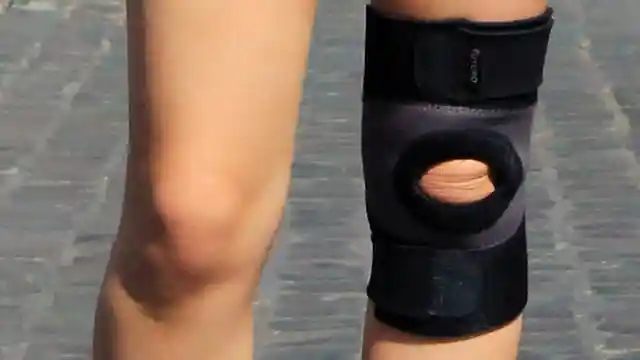
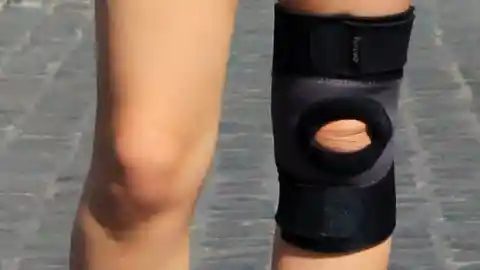
Get plenty of dairy
Dairy is one of the best dietary sources of calcium, an important nutrient that keeps bones healthy and strong. It also contains high levels of protein, which your body can use for repairing muscles and ligaments. If you can’t drink dairy for dietary reasons, look for alternatives that have been fortified with additional vitamins and minerals.


Get stem cell treatment
Stem cells have the ability to change themselves into different kinds of cells depending on the need, and they have the potential to revolutionize medicine. Experimental treatments involving injecting stem cells directly into damaged joints have shown remarkable results, with the cells initiating tissue regeneration. While stem cell treatments aren’t widely available, it’s definitely worth making an enquiry your healthcare provider.


Quit smoking
Smoking is terrible for just about every part of your body, and your joints are no exception. Numerous studies have found that smoking exacerbates pain for sufferers of arthritis, but don’t think that you get a free pass if you don’t have this condition; smoking significantly elevates inflammation throughout your body, so if you want to keep your knees healthy, you should definitely kick the habit.


Drink bone broth
Collagen is the primary building block of your body’s muscles, bones and connective tissues, making it a vital nutrient when it comes to joint health. One of the best sources of collagen is bone broth, which has exploded in popularity in recent years. While it can be expensive to buy, bone broth is cheap to make at home, although it requires a little patience.
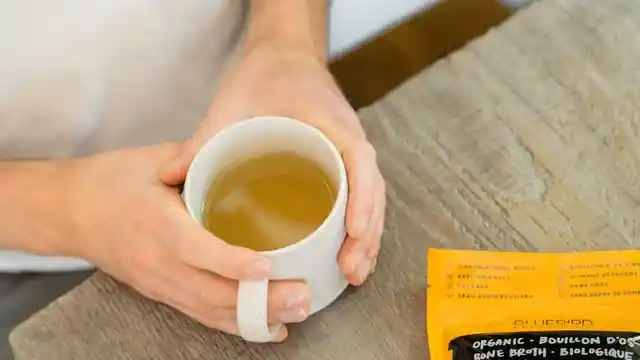

Start meditating
Getting a bit of zen in your life isn’t just good for your mind; by reducing stress – and the inflammation it causes – regular meditation can actually improve the health of your joints and ensure they keep working well into old age. The best time to meditate is first thing in the morning, before you have the chance to get swept up in the day’s tasks.


Avoid soda
Many of the ways soda negatively impacts health are well-documented, but a lot of people aren’t aware of one of its most insidious effects: it increases excretion of calcium. This means that regularly consuming soda can quickly lead to a deficiency of this vital mineral, spelling trouble for your bones and joints.


Consult a physiotherapist
If you’re struggling with nagging knee pain that just won’t go away, it’s a good idea to consult with a physiotherapist. As well as being able to diagnose the problem, a physiotherapist will recommend exercises and stretches that will restore your knee to full working order without risking further damage.


Get a standing desk
A number of studies have linked sitting down to a range of negative health outcomes, including knee pain. When you sit your knees are, by definition, in a flexed position, which can lead to strain over time. Switching to a standing desk will allow you to work while in a more natural position.


Get in the pool
When it comes to low impact workouts, swimming reigns supreme. Because water the takes weight off your joints, you can work out at a high intensity without worrying about wearing out your knees. Swimming also simultaneously strengthens your legs and improves mobility, both important when it comes to protecting your knees as you age.


Treat injuries promptly
If you do injure your knee, it’s import to treat it as quickly as possible. Apply ice, pop some anti-inflammatories and get your leg elevated. You should try to avoid placing pressure on the knee until the pain and swelling have completely subsided, but if this isn’t possible, then try to keep movement to a minimum.


Make sure you warm up
Warming up before exercise is incredibly important, and this become doubly true past the age of 50. When you don’t warm up properly, you dramatically increase the risk of injuries to your muscles and joints. You should aim to warm up for at least ten minutes before starting your actual workout.


Be careful lifting heavy loads
When it comes to lifting heavy loads, the classic advice is to lift with your knees, rather than your back. While this is certainly a sound principle, it does mean that you should think twice about lifting heavy objects if you have sore knees, and there’s never any shame in asking someone for help.


Reach for some citrus fruits
While the evidence that vitamin C can fight off colds is pretty limited, studies have found that it could be helpful in keeping joints healthy. Supplements are always an option, or you could try indulging in some citrus fruits instead. A typical orange contains enough vitamin C to meet your daily recommended amount, and it also packs a bunch of other healthy nutrients.


Fix the way you walk
Chances are you’ve been walking for most of your life, and you probably think you’re pretty good at it. However, there’s actually a correct way to walk, and a lot of people get it wrong, placing unnecessary strain on their knees. When you walk, keep your head up, your core engaged and your back straight, while swinging your arms in a natural motion.


Don’t drink in excess
Regularly drinking in excess causes damage throughout your body, sending levels of inflammation skyrocketing and damaging tissues. All of this can have a negative effect on your joints. While the odd drink won’t do any harm, keep your consumption to a minimum if you’re worried about the longevity of your knees.


Take up cycling
Cycling is one of the healthiest forms of exercise, allowing you to enjoy a great cardio workout while getting some fresh air and sunshine at the same time. Crucially, cycling is also a low impact form of exercise, allowing you to strengthen the muscles in your legs while keeping the strain off your knees.


Improve your posture
Good posture keeps your joints in perfect alignment, meaning that strain is evenly distributed throughout your body. Poor posture, on the other hand, places extra stress on certain joints – particularly your knees – which over time can lead to pain, reduced mobility and lasting damage. If you already suffer with bad posture, you’ll need to daily exercises to reset it.


Drink enough water
Everyone knows that it’s important to stay hydrated, but it can be easy to forget to drink when you’re caught up in the frenzy of everyday life. Drinking plenty of water flushes inflammation-causing toxins out of your body and keeps your joints well lubricated, making it an essential habit when it comes to preserving knee health.


Use steroid injections
Most people associate steroids with bodybuilders, but they are actually far more commonly used in medical settings. Thanks to their potent anti-inflammatory properties, steroids can be powerful tools for treating and rehabilitating damaged knees, so if you’re struggling with knee pain it might be worth bringing up steroid injections with your doctor.


Enjoy coffee in moderation
The health benefits of coffee have been well-established, and they include reducing inflammation throughout your body, which is good news when it comes to joint health. On the other hand, over-consumption of caffeine has been linked to weakened bones, due to increased secretion of calcium. On balance, coffee is probably good for your joints, so long as you enjoy it in moderation.


Take hot baths
Heat is great for reducing inflammation, and an easy way to get more of it is to regularly take hot baths. As well as fighting inflammation, hot baths also relax your muscles and soothe aches and pains, all of which is great when it comes to keeping your knees working perfectly.


Get surgery
If your knee problems aren’t responding to rest and rehabilitation exercises, it might be time to go under the knife. The exact type of surgery you’ll require will depend on the problem that’s causing your pain, but most of the time minimally invasive keyhole surgery will be the best option, and success rates are generally high.


Stop fidgeting
Fidgeting is often an unconscious habit, but it can have a negative effect on your health. In particular, bouncing your knees up and down or tapping your toes places a lot of extra strain on the joints in your legs. Fidgeting is normally a symptom of nervous energy, so if it’s a problem for you, consider taking up a mindful, relaxing activity like yoga.


Get massages
While knee problems are often the result of damage within the joint itself, they can also be caused by muscular tension. Visiting a professional masseuse is a great way to work that tension out of your stiff muscles, restoring balance to your body and reducing unnecessary strain on your joints.


Get a hyaluronic acid injection
Hyaluronic acid is a gooey substance that is produced by your body to help lubricate your joints. As you age, however, your body produces less of this substance, increasing friction in your joints. Fortunately, it’s now possible to get hyaluronic acid injected straight into your knees, where it can help keep them lubricated and working smoothy.


Work on your balance
As you age, your sense of balance naturally degrades, which often results in increased pressure on one or both knees. Fortunately, with a little bit of effort, it’s possible to maintain your balance well into old age. Try to incorporate a bit of balance work – such as standing on one leg at a time – into your daily routine.
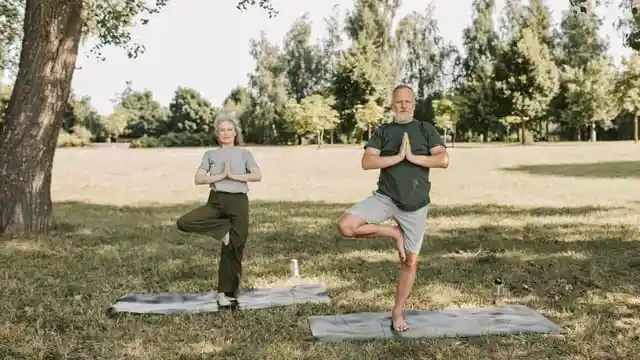

Hit the weights
A number of studies have found that lifting weights is one of the single best habits for keeping your body healthy as you age. Strength training preserves and increases muscle mass, bone density and connective tissue, all of which are absolutely vital when it comes to the health of your joints.


Take an omega 3 supplement
Omega 3 fatty acids are incredibly important nutrients, conferring benefits ranging from heart health to reduced inflammation in joints. Unfortunately, the vast majority of people in the West don’t get enough of it in their diets. While this can be remedied by simply eating more fish, an easier solution is to reach for a high-quality supplement.


Go for regular walks
Walking often gets overlooked as a form of exercise, which is a shame. As well as providing a great form of low-impact cardio, the gentle, repetitive movement of walking is great for keeping knees working smoothly. If you’re struggling to find the motivation to go for regular walks, look for walking groups in your area.


Avoid going out in the cold
While a bit of deliberate cold exposure is great at reducing inflammation, going outside in the cold for a protracted length of time is a different matter. As you get older, your body gets worse at thermal regulation, and is likely to respond to cold by stiffening up, which will place unnecessary stress on your knees and ankles.


Incorporate intermittent fasting
Intermittent fasting has blown up in popularity in recent years, and a number of high-quality studies have found that there might just be something to it. When you abstain from eating (most people follow a pattern of fasting for 16 hours, followed by an eight hour feeding window), your body initiates a number of mechanisms that clear out toxins, repair damage and reduce inflammation.


Cut down on red meat
While red meat isn’t without its health benefits, as you get older you should try and limit the frequency with which you eat it. This is because high nutritional levels of iron have been linked to increased risk of osteoarthritis, a painful and sometimes debilitating condition that often affects the knees.


Consider hormone replacement therapy
As you age, your body’s output of certain hormones, such as testosterone and estrogen, inexorably begins to decline, increasing the likelihood of joint pain. If you’re over the age of 50 and struggling with achey knees – especially if you’re also experiencing other telltale symptoms such as lethargy and low libido – talk to your doctor about the possibility of hormone replacement therapy.
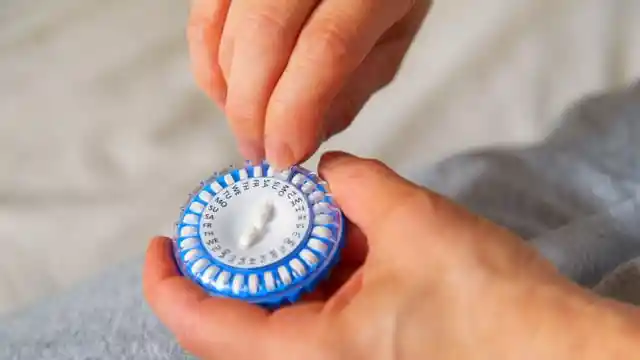

Take up Qiqong
Qiqong (pronounced “chee kong”) is an ancient Chinese practice that focusses on movements designed to simultaneously improve fitness, strength and posture, all of which are important for keeping knees healthy. Because it’s a low-impact form of exercise, Qiqong is also ideal for over 50s, or anyone struggling with their joints.


Avoid foods high in purines
Gout is an agonizing condition caused by a buildup of uric acid, which forms crystals inside joints. To stave off gout, you should avoid eating foods high in purines, compounds which lead to elevated levels of uric acid. Examples of such foods include anchovies, scallops, organ meats and anything containing high-fructose corn syrup.


Try cryotherapy
By specifically targeting affected areas with extreme cold, cryotherapy has a proven ability to greatly reduce joint inflammation and pain. As it’s a relatively new technology it often isn’t covered by insurance, and treatment can be costly, but if you have an injured knee that doesn’t seem to be getting better, it’s definitely worth giving it a shot.


Add hip thrusts to your workout regimen
When it comes to knee health, anything that increases stability in your legs is going to be your best friend. By tightening the muscles in your glutes – which are often underdeveloped through lack of use – hip thrusts can do exactly that, making them a great addition to your workout regimen.
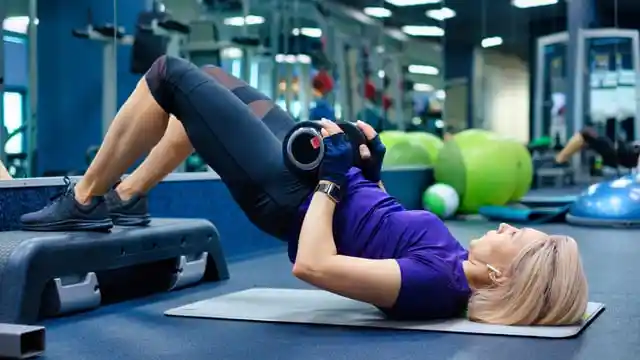
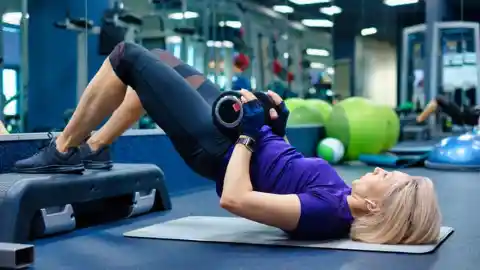
Consume more probiotics
Scientists are increasingly paying attention to the gut microbiome, and the role it plays in maintaining health. Crucially, people with healthy, thriving microbiomes tend to have low levels of systemic inflammation, which directly translates to healthier joints. When it comes to populating your gut with good bacteria, skip the pills and opt for a natural probiotic like kefir or kombucha.


Practice walking backwards
While you might look vaguely insane while you do it, walking backwards can seriously boost the health of your knees by forcing them to fully extend. Try to spend a few minutes every day walking backwards, but take it slowly until it starts to feel natural, otherwise you could do more harm than good.


Install a stair lift
Going up the stairs places significant strain on the joints in your legs, which can eventually lead to worn out cartilage and a number of other issues. If ascending your staircase has become a painful activity, consider getting a stair lift installed in your house.


Incorporate deep squats
All of us are born with the ability to deep squat (for proof, just watch toddlers at play), but this ability is often lost in adulthood through lack of use. This is unfortunate, as regularly deep squatting is incredibly beneficial for both your knees and ankles. The good news is that, with a bit of practice, it’s possible to regain the flexibility, balance and strength required to comfortably hold this healthy position.


Eat more protein
If you want to keep your joints healthy, it’s important to give your body the tools it needs to repair them. Protein – particularly complete proteins like whey – contain amino acids that your body uses to rebuild muscles and connective tissues. As you age your protein requirement increases, so it’s vital to ensure you’re consuming adequate levels.


Reduce fall risks in your home
As you get older, the consequences of falls become greater, with knees and hips often bearing the brunt. Unfortunately, age-related decline in coordination and balance also increases the likelihood of falls. If you’re over the age of 50, you should try to make your home safer by removing objects that are easy to trip over and ensuring areas are kept well lit.


Develop proper running technique
While running is fantastic for both your physical and mental health, it can put a fair amount of stress on your knees. Getting older doesn’t mean you should give running up – especially if it’s a form of exercise you enjoy – but it does mean that having good form becomes increasingly important.


Start slow
If you currently live a sedentary lifestyle, starting an exercise regimen is arguably the single best change you can make to guarantee the longterm health of your knees. However, while it can be tempting to jump straight in, if you want to avoid injuries you should start slowly, only gradually increasing the difficulty as your abilities improve.


Add turmeric to your diet
Turmeric, a bright orange spice often used in Asian cuisines, has been identified as a potent anti-inflammatory in a number of studies, making it a useful tool when it comes to keeping your joints healthy. If you’re not a fan of turmeric’s distinctive flavor, it’s relatively inexpensive to get in supplement form.


Take adequate rest days
While getting regular exercise is one of the best things you can do for your knees, overdoing it will have counterproductive effects. As a general rule you should take a minimum of two rest days a week, although that number should go up if you’re engaging in high intensity workouts or if you’re regularly feeling sore.


Take a glucosamine supplement
Glucosamine is one of the building blocks of cartilage, making it an important nutrient for keeping your knees pain-free as you age. While certain foods – such as shellfish and crabs – are naturally high in glucosamine, it’s generally more cost effective to get it in supplement form.


Stick to the treadmill
Treadmills provide a great way to reap the benefits of running without the knee strain that comes from your feet hitting the sidewalk. Just bear in mind that, while significantly easier on your joints than running outside, running on a treadmill will still put pressure on your joints, and so shouldn’t be performed every day.


Fix anterior pelvic tilt
Anterior pelvic tilt is an increasingly common postural imbalance, resulting in a telltale ‘Daffy Duck posture’ that places a lot of strain on the knees. The cause of anterior pelvic tilt is weak hamstrings and tight hip flexors – often the result of spending too much time sitting – and the solution involves exercises that remedy this imbalance.


Regularly extend your knees through their full range of motion
One of the best ways to keep your knees in good shape is to regularly extend them through their full range of motion. Doing so on a daily basis will keep the muscles and ligaments responsible for moving the knee flexible and loose, as well as encouraging your body to produce more naturally lubricating substances.


Take up Pilates
Invented in the 20th century by a German physical trainer, Pilates is a form of exercise that focuses on balance, strength, flexibility and posture – in other words, all the things you need to keep your knees healthy. Depending on where you live, it should be easy to find a Pilates class, but there are also countless tutorial videos online.


Use a foam roller
Foam rollers provide a cheap and easy way to reap many of the benefits of massage without having to fork out for a masseuse. By stimulating myofascial release, foam rollers can ease the kind of muscular tension that often results in knee strain, as well as generally improving mobility, which will reduce your risk of knee injury.
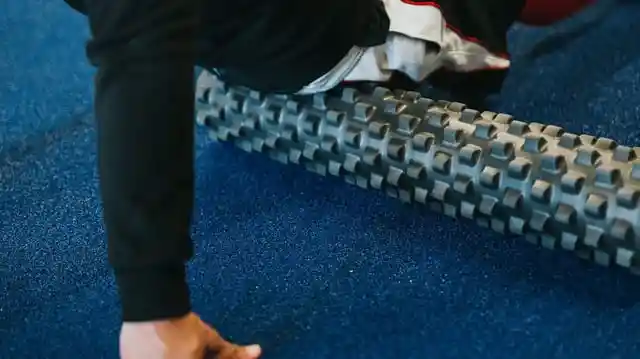
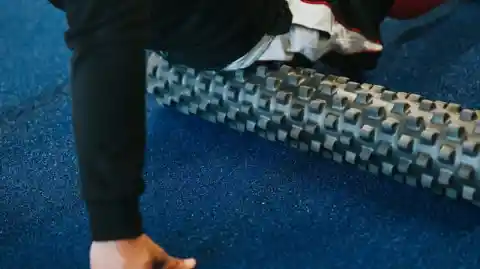
Try isometric exercises
Isometric exercises involve keepings muscles in a state of contraction for an extended period of time. One of the major benefits of this kind of workout is that it allows you to strengthen muscles without the impacts and repetitive movements that place strain on your knees and other joints.


Get enough sleep
Getting enough sleep is vital for keeping your joints healthy, as it gives your body time to repair the damage that accumulates throughout the day. If you’re struggling to consistently get around eight hours of shuteye, improve your sleep hygiene by going to bed at the same time every night and avoiding screens for at least two hours before you turn in.

